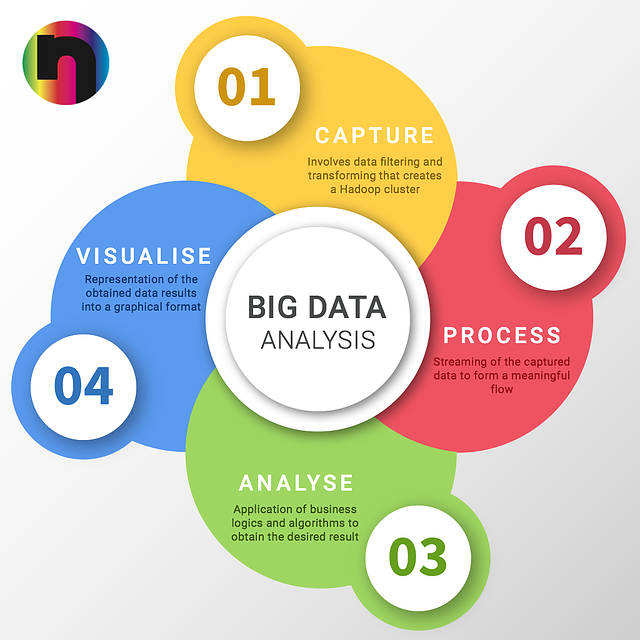How Artificial Intelligence is changing Education
Artificial Intelligence has gone from being the stuff of science fiction to a commonplace of everyday life. We are surrounded by intelligent devices...
4 min read
Anurag : Feb 18, 2020 12:00:00 AM


Machine learning and AI are two of the foremost exciting technologies presently being developed and applied inside industries round the world. Their potential is sort of limitless and their gradual implementation in varied fields and sectors are principally met with widespread acclaim.
The education sector is one amongst the industries set to learn from the implementation of machine learning technologies in and around the classroom and varied applications exist already that are serving to faculties, and universities in creating the transition to those new, groundbreaking technologies.
In this article, we’ll be viewing how machine learning is remodeling each education and also the classroom, however, before we tend to get into that, let’s take a quick look at how machine learning came to be one amongst the foremost exciting technologies to ever hit the classroom.
The idea of AI getting used inside the education sector is an inspiration nearly as previous because of the concept of AI itself. Since the early 1960s, futurist conscious golem lecturers or HAL 9000 impressed “oracles” have each been floated as doable ways that during which AI and machine learning may be used inside the education sector.
However, these iterations are far more complicated and far less helpful than those we’ll discuss during this article. Within the past, physical hardware and also the advent of computers and the net have helped revolutionize the manner we tend to teach and learn, now, with the arrival of intelligent technologies powered by AI or machine learning, we can look to revolutionize our instructional operations all over again.
Alongside AI and machine learning, wireless communications networks increased reality applications, information analytics, and virtualized learning environments have all emerged in recent years and may be combined with AI and machine learning to any enhance the advantages of machine learning technologies inside lecture rooms.
So, now we’ve seen how AI and machine learning came to be such exciting innovations for educational purposes, let’s take a look at how machine learning is transforming both education and classrooms.
Machine learning at intervals interactive instructional tools will create a lot of targeted, a lot of curt sort of instructional content. This content may be made-to-order to suit every individual learner based mostly upon the information collected through their engagement with different packages or applications or based upon their learning pathway. Made-to-order content will, just like the antecedently mentioned prediction and learning pathways technologies being developed and tested, facilitate students to gain a deeper understanding of an issue space. Made-to-order content may even be used at intervals in our next space of focus, virtual and room technologies.
Using the unmatched power of AI and machine learning systems to predict outcomes based mostly upon pre-existing sets of knowledge, learning pathways might be generated for individual students that are either trying to enhance specific areas in their class periods or those whom their teacher or lecturer feel would advantage from further attention spent on a precise topic of subject. This could facilitate lecturers to enhance their student’s data and “fill within the gaps” they will have in the run-up to special exams and deadlines.
Big Data and analytics packages have gone hand in hand for a previous couple of years currently. However, whereas some tries are created to integrate huge information and analytics into student performance pursuit and personalized tutoring, even fewer have tried to integrate machine learning into this combine. Machine learning, once accustomed track student performance and tutoring necessities might be used to alert colleges and schools of however well students do and if they fall below a precise level of group action or grades. These systems may then be accustomed to establish the area(s) within which the code is troubled and generate a tutoring attempt to address these problems.
Virtualization and Classroom Technologies are two trends that are presently sweeping across nearly each industrial and industrial sector on the earth. Virtualization of instructional and learning zones will facilitate the creation of engagement with students and learners. The World Health Organization could otherwise struggle with ancient teaching methods like textbooks or blackboards. increased reality applications, as an example, could use machine learning technologies to more enhance their potential applications and will be used across colleges and schools to each draw close student engagement and start to implement “smart” technologies across the university.
Learning to figure along in a very team is one in all the foremost vital aspects students will learn throughout their time in class. With machine learning systems, collaboration efforts may be more increased through the implementation of the net, mobile, and machine learning technologies. One example of this can be the app Brainly, which is being seen as a social media network for college kids to debate and estimate answers to their schoolwork. Machine learning algorithms estimate that users are real further as which queries are spam whereas also confirm the answers submitted by students to answer their peer’s questions. There are even ways that within which students will collaborate to come back up with their answers.
As categories get a lot of and more huddled, lecturers have very little time to deal with individual queries students may need. The exploitation of virtual assistants (VA), students will solve their queries themselves by merely trying to inform the web, saving them time and energy of the lecturers avoiding repetitive queries.
This methodology conjointly empowers lecturers to record and analyze the sort of queries students raise the virtual assistants. This way, lecturers will establish weaknesses in comprehension and learning, course-corrections, and their teaching strategy.
Teachers pay the bulk of their time functioning on grading and marking assessments. Which means tons of their fruitful, economical hours are wasted on an activity which will simply be machine-controlled.
To reduce this burden, establishments are the exploitation of artificial intelligence-led solutions for automatic essay rating, reducing the reliance on multiple choice-based queries. These solutions are adding to the holistic learning patterns and guaranteeing higher student comprehension.
As the scale of education expands, personalizing communication with students and their guardians becomes progressively tough. Providing students, parents, and lecturers access to the proper data at any given purpose of your time and from anyplace is one more challenge. AI-fueled chatbots will tackle each of the gaps head-ons. With chatbots, data may be accessed from anyplace by anyone at reduced prices and improved potency. Chatbots will record conversations with everyone, personalizing the expertise a lot of and more when.
A lot of the enrollment activities stay similar year on year. Automating these tasks with AI makes tons of sense for instructional establishments. Personalized communication with students will facilitate them to register in universities with ease. Day-and-night, AN integrated chatbot will answer their several queries before admissions and contour the whole method of application and Enrollment. This could free lecturers and different employees from the body and repetitive work that deserves to be machine-controlled.
University education largely happens in lectures with tons of scholars. Therefore, dedicating time to people or maybe tiny teams may be difficult. Personal virtual tutors powered by AI and the metric capacity unit will do the task. a non-public virtual tutor will customize learning for every, taking into consideration their speed of learning and comprehension- providing the mandatory support where required.

Artificial Intelligence has gone from being the stuff of science fiction to a commonplace of everyday life. We are surrounded by intelligent devices...

Source: https://unsplash.com/photos/e6n7uoEnYbA

Data alone is nothing but the deep data analyzed can become a treasure in the form of reliable information, which can make a difference in the...